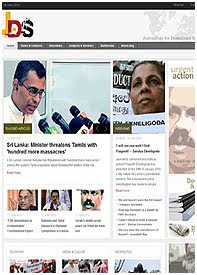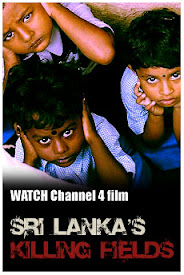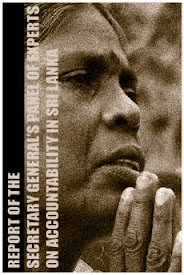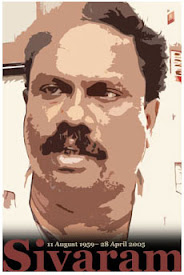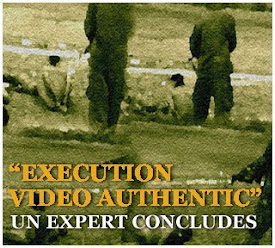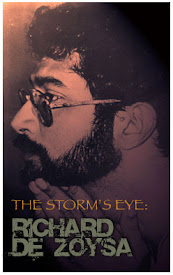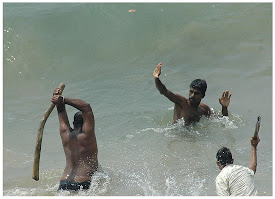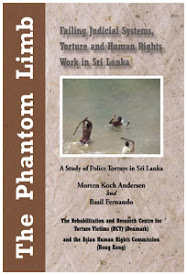
By R.M. Karthick | Tamil Net
.............................................................................................................................................................................................
The understanding of this camp is that state violence happened as a onetime event, there were a few or many excesses in this event, but there is a possibility of a post-event condition within a united framework of a ‘better’ Sri Lanka.
On the other hand, the ‘structural genocide’ position contends that horrific violence on the Eelam Tamil body-politics is not a onetime event but is a process, and that it is not an aberration but is inherent to the system of united Sri Lanka.
The theme of structural genocide of the Eelam Tamil nation has been addressed in various articles, editorials and features on TamilNet. In this regard, the study of Slovenian philosopher Slavoj Zizek on ‘systemic violence’ provides some valuable theoretical insights.
Violence inherent in the system
Prof. Zizek, who is a Marxist and critical theorist, writes in his brilliant book ‘Violence: Six Sideways Reflections’ that systemic violence has to be taken into account if at all one is to make sense of visibly horrifying subjective violence.
Zizek writes that “We’re talking here of the violence inherent in a system: not only direct physical violence but also the more subtle forms of coercion that sustain relations of domination and exploitation, including the threat of violence.”
The thinker seeks to point out that subjective explosions of physical violence, like in the Eelam Tamils’ case what happened in Black July or in Mulli-vaaykkaal, cannot be seen in isolation from the various forms of psychological and symbolic forms of violence that are part and parcel of the system.
For such a system to survive, it needs not just a Weberian ‘monopoly of violence’, it always needs to point out to the subjects it colonizes that it has the will to exercise this violence as and when it deems fit.
'True Sri Lankans'
So, acts like land grabbing, assaults on villagers by Sinhala army men and settlers, rapes, attacks on student leaders etc. are all required by the system to function smoothly till a point where the colonized Eelam Tamils themselves are psychologically conditioned by the system to become ‘true Sri Lankans’.
The Sri Lankan system’s threats of violence through the physical presence of army men in all Tamil localities, the military checkpoints throughout the occupied areas of Tamil Eelam, intrusion of private spaces and its symbolic violence through the desecration of all symbols of Eelam Tamil resistance and identity serve the purpose of this conditioning.
Writing about such political systems, Zizek argues that, “One of the strategies of totalitarian regimes is to have legal regulations (criminal laws) so severe that, if taken literally, everyone is guilty of something. But then their full enforcement is withdrawn. In this way the regime can appear merciful”.
This is precisely the case in occupied Tamil Eelam where practically every Tamil is a terror suspect under the draconian laws unless proven otherwise, that is, unless he or she is willing to work within the framework set by the oppressor.
The Sri Lankan regime makes itself appear democratic by allowing token elections conducted with the full supervision of the armed forces, symbolically hinting that if the Tamils do not vote for the parties whom it is comfortable in negotiating with then the other alternative is force.
The fact of such functioning namesake elections and kangaroo courts is thrown by Sri Lanka as an argument of its ‘democratic practices’ and to cover up its omnipresent threat of violence against Eelam Tamils.
Politicizing human rights
Much of Zizek’s book is also an intellectual attack on the liberal theorists who promote a depoliticised human rights discourse.
Zizek writes that while they claim to fight subjective violence, such liberals “are the very agents of structural violence which creates the conditions for the explosions of subjective violence.”
Those who followed the Eelam struggle closely will know how certain dubious NGOs and academic institutions minted money out of the misery of the Eelam Tamil people and the propaganda they spread and continue to spread on the possibility of ‘post-conflict reconciliation’ while simultaneously evading the fundamental political question that confronts the Eelam Tamil nation – the right to exercise political self-determination.
The argument of charitable donations by such organizations is cruel in its apparent benevolence in that it requires that the Eelam Tamils be first reduced to a state of penury so that they can intervene and make their lives better.
As Zizek notes, “Charity is the humanitarian mask hiding the face of economic exploitation.” Organizations such as these only help providing a system practising structural genocide a good face.
Contrary to what certain Tamil politicians who are manipulated by India and/or western powers and intellectuals on the payroll of ‘donors’ may claim, the Eelam Tamils did not fight for individual human rights or equality.
That is not just a fallacy of missing the wood for the trees, but to actually make a criminal claim that there were ever no trees in a wood that have been razed to the ground.
Any genuine politics must start from the position that Eelam Tamils as a people are unequal, and will continue to be unless they have political power in their hands, in their own state.
It is also imperative to point out Zizek’s message to certain genuine humanitarians in the diaspora who are keen on doing ‘something’, without considering the core politics of what they are dealing with:
“Better to do nothing than to engage in localised acts, the ultimate function of which is to make the system run more smoothly.”
Unless one has the correct perspective of the needs of the Eelam Tamil struggle and the corresponding political will to serve the same in all actions, one will always be engaged in futile actions and be inevitably co-opted by the powers that reign.
© Tamil Net
Thursday, November 10, 2011
Sri Lanka: Inventing 'identities' through 'systemic violence'
Thursday, November 10, 2011
'Secret detention centres' in Sri Lanka
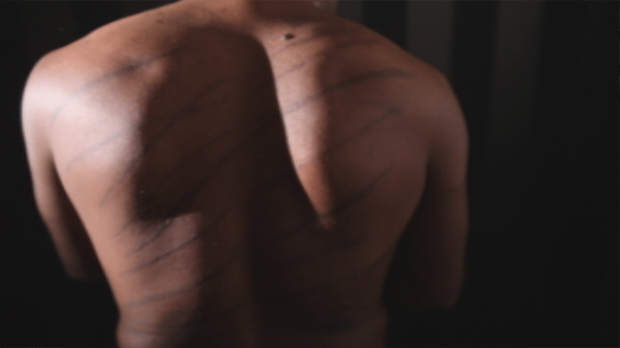
BBC Sinhala
.............................................................................................................................................................................................
The 47th Session of the CAT met in Geneva on Tuesday with the Sri Lankan Delegation where Sri Lanka's commitment to upholding rights was severely questioned.
Several committee members accused the Sri Lankan government of not providing detailed information requested in advance.
The vice chair said that the allegation on 'secret detention centres' suggests the need for an independent investigation.
"Sri Lanka Army and affiliated Para military groups have run and made possible to run secret facilities which torture and extra judicial killings, have it is claimed, perpetrated" she said
Seven centres
She said that Amnesty International had cited 7 torture detention sites in northern Sri Lanka; five in Vavuniya and two in Mullaitivu.
Poonthottam Maha Vidyalaya, 211 Brigade headquarters, Vallikulam Maha Vidyalaya, the PLOTE paramilitary detention centre and Dharmapuram as five camps in Vavuniya while two camps were named from Mullaitheevu.
Miss Gaer said that there are allegedly five compounds in Dharmapuram detaining more than 700 men and women in abandoned buildings and houses, holding 80 top levels LTTE people and 300 civilian supporters.
The UN Working Group on Disappearances has identified Sri Lanka as having the second largest most number of disappearance cases in the world, she informed the session.
"While many of these cases have been clarified there are more than 5,000 that haven't been" states Miss Felice Gaer.
Zero Tolerance
Committee Member Alessio Bruni said, "zero tolerance policy for torture in Sri Lanka is not achieved and more effective measures have to be taken".
However, Senior Legal Advisor to the Sri Lanka Cabinet former Attorney General Mohan Peiris told the Committee that "There will be no tolerance of torture, no exception to that rule".
He said that Sri Lanka is committed to upholding the rule of law.
"We are committed to a world in which we can live in peace and dignity and you can be sure that we would do our utmost in the compliance of the convention provisions so that Sri Lanka will be an ideal place on this planet in which that everyone who lives there can live as brothers and sisters of the same family" Advisor Peiris added.
The Chairman of the Committee who summed up Tuesday's sessions and said that Sri Lanka would answer to the question put before them on Wednesday.
© BBC Sinhala
Thursday, November 10, 2011
Sri Lanka: Lawyers demands the Government to withdraw the ban on websites

Press Release | Lawyers for Democracy
.............................................................................................................................................................................................
Lawyers for Democracy (LfD) states that the present regime fears criticism, dissent and any democratic challenge on their undemocratic and corrupt actions. In the recent past, Sri Lanka has had a questionable track record of limiting freedom of expression with dozens of journalists being killed and few media institutions being attacked. In none of these cases, were there any credible investigations. A considerable number of journalists are living in exile in fear for their lives. Several popular websites have now been banned without any legal basis and are inaccessible.
In addition, government owned media institutions conduct themselves as the legitimate propaganda units of the ruling party. Self censorship dominates private media institutions, except a few. The media regulating institutions have been packed with politically bias individuals. Due to their own political bias and systemic failures, the Telecommunication Regulatory Commission and Department of Information are unable to perform their duties independently with integrity, in a way which safeguards the constitutionally guaranteed liberties of citizens. In the recent past, internet and social media created a space for public expression on sensitive and political challenging issues, including the very conduct of the regime and its close circle. The internet ban should thus be viewed seriously in this backdrop. LfD emphasizes that the public should have access to internet, particularly the web sites exposing corruption and abuses of power. Human rights norms, including the Constitution and the International Covenant on Civil and Political Rights, guarantee free expression of views and opinion, however distasteful it may be for a government. As our Supreme Court has time and again recognized, "the right to criticize governments and political parties is fundamental to the democratic way of life. Freedom of expression cannot be denied without violating those fundamental principles of liberty and justice, which lie at the base of all civil and political institutions.”
LfD concludes this statement with an often quoted judgment of Justice Brandeis in Whitney vs. California:
"Those who won our independence were not cowards. They did not fear political changes. Fear of serious injury cannot justify suppression of free speech."
We urge the government to immediately withdraw this unconstitutional decision to introduce a ban on certain websites and the registration requirement for websites.
Lawyers for Democracy (LfD) is a representative body of legal practitioners throughout the island and include Lal Wijenayaka, Chandra Kumarage, K.S.Ratnavale, V. Sumanthiran, Sudath Nethesinghe, L. Jothikumar, Ranjit Wijekoon, Sujeewa Lal Dahanayake, J.C.Weliamuna and Sudarshana Gunawardena.
Thursday, November 10, 2011
Sri Lanka court stays war-zone new land registration process
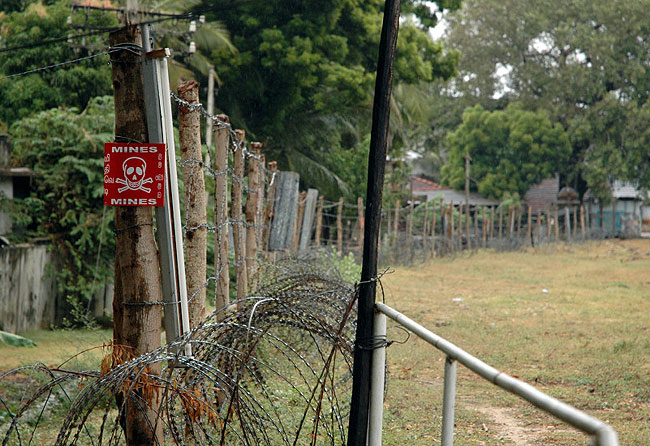
Photo courtesy: Ross Tuttle
Lanka Business Online
.............................................................................................................................................................................................
In July 2011, Sri Lanka's Commissioner General of Lands had issued a circular Regulating the Activities Regarding Management of Lands in the Northern and Eastern Provinces, which had raised concerns among residents and civil society groups.
In view of the stay order, inhabitants of the areas are not required to register their land under the new process, lawyers said.
The case was filed by M A Sumanthiran, a lawyer, who is also a parliamentarian for a minority Tamil party the court of appeal had stayed the circular.
Sri Lanka's attorney general has said the registration process is being reconsidered they were not objecting to the stay order.
The case would be heard again on January.
A 30-year war ended in Sri Lanka's North and East two years ago with the wiping out of the Tamil Tiger separatist group. But many inhabitants do not have documents.
© LBO
Thursday, November 10, 2011
'Impunity for torturing detainees in Sri Lanka' Amnesty tells UN panel

By A Staff Writer | RTT News
.............................................................................................................................................................................................
In its briefing to the U.N. Committee on Monday, Amnesty International, working closely with Sri Lankan human rights defenders, documented a persistent pattern of torture of detainees and a culture of impunity in that South Asian island nation.
"There is no longer an independently functioning unit investigating torture allegations leveled against the security forces, which calls into question Sri Lanka's commitment to ending this abhorrent practice," said Yolanda Foster, Amnesty's Sri Lanka expert.
"It's not enough to have legislation if you have no effective means of implementing it. Although Sri Lanka has a law against torture, in effect it is treated as little more than a piece of paper, as Sri Lankan colleagues have pointed out," she said.
During the first 14 years of the anti-torture legislation, only three prosecutions were reportedly made under the Special Investigation Unit of the police, which has since been sidelined.
In 2008, the government said that in the previous four years, there had been 42 indictments against 90 people as a result of investigations into allegations of torture. An additional 31 torture cases were sent to the police to start action in the magistrate's court. Most of these cases, however, never went to trial.
Torture is carried out by police, inmates and prison guards. Detainees are also routinely tortured and beaten by military personnel and paramilitary units working with government forces, such as the Army and Navy.
Women's rights activists have repeatedly expressed concern to Amnesty that gender-based violence, including violence amounting to torture is not taken seriously by the Sri Lankan authorities. Sexual violence is highly under-reported and where it is reported, poorly investigated, the activists say.
Enforced disappearances continue to be reported, and bodies of victims of extra-judicial killings have shown evidence of torture.
Individuals detained on suspicion of links to the Liberation Tigers of Tamil Eelam (LTTE), have also been victims of torture. Sri Lankan detainees have been held arbitrarily for prolonged periods, sometimes years, without charge. Many have been arrested and detained on suspicion of links to the LTTE pending investigation and interrogation by Sri Lanka's intelligence and security forces, or for "rehabilitation." People alleged to be involved with the LTTE are rarely brought to trial. Most of these detainees are eventually released for lack of evidence. Criminal suspects are also subjected to torture in Sri Lanka, says the London-based human rights watchdog.
Foster urged the Sri Lankan government to "immediately begin a complete overhaul of its criminal justice system and guarantee prompt and fair investigation of any allegations of torture."
She also demanded "prosecutions of security agents suspected of torture as a matter of urgency."
© RTT News
Thursday, November 10, 2011
Sri Lanka parliament approves asset acquisition act
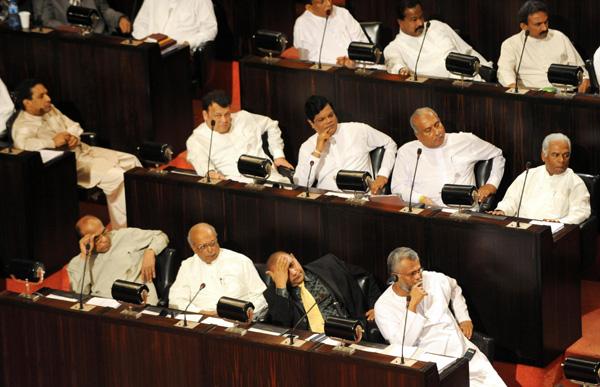
By Shihar Aneez and Ranga Sirilal | Reuters
.............................................................................................................................................................................................
The new law, passed by 122 votes to 46, will pave the way for the state to acquire 37 properties including from two listed companies it has said are underperforming.
Leases on the assets, mainly land, were given away or sold at a discount years ago either as an incentive for investment or with the aim that loss-making state-owned enterprises could be turned around.
President Mahinda Rajapaksa's ruling party has been strongly criticised by opposition parties and leading business chambers for seeking to expedite the bill without public discussion and without any opportunity for the properties' holders to argue against their listing.
"No asset under the bill is owned by the private sector," influential Economic Development Minister Basil Rajapaksa, a younger brother of President Rajapaksa, told parliament during Wednesday's debate.
"These assets are owned by the government and public. The acquisition is to utilise them to get the maximum benefits.
The government says the owners will be compensated, but it is not clear what criteria compensation would be based on.
"I assure that we will never acquire private assets," the minister added, promising to "protect investors both local and foreign".
The main opposition United National Party said during the debate that the bill would damage investor sentiment and discourage foreign investment in the $50 billion economy, hindering Sri Lanka's post-war development.
It said the "politicised" takeover bill included at least three profit-making firms.
NATIONAL INTEREST
The asset acquisition bill allows the government to appoint authorities to manage "in the interests of the national economy" what it has defined as one underperforming enterprise and 36 underutilised assets.
The opposition had argued that the bill violates the country's constitution and should not be debated while a ruling on a fundamental rights case against it is pending.
But Speaker Chamal Rajapaksa, the president's elder brother, overruled the protest and allowed the debate after Sri Lanka's Supreme Court informed parliament on Tuesday that the bill was consistent with the constitution.
Assets listed in the bill include Hotel Developers Lanka Plc , which runs the five-star Hilton Colombo hotel, and 6,300-hectare land owned by Pelwatte Sugar Industries Plc . Shares in Pelwatte Sugar have fallen 15.5 percent and those of Hotel Developers Lanka have dropped 27.1 percent since the market first got wind of the proposed bill on October 1.
Though Rajapaksa has said the bill will be a 'one-off' to acquire the specified properties, economists, investors, state officials and opposition politicians have warned it amounts to nationalisation and could damage business confidence.
"It will impact larger projects and potentially investors of large scale will be worried," Frontier Research economist Amal Sandarathne told Reuters.
The government has also been criticised recently after it cancelled a $500 million hotel deal with a Chinese firm over a land dispute and transferred a top Securities and Exchange Commission official. ,
A senior bank economist speaking on condition of anonymity said the way in which the bill had been introduced risked discouraging investors.
He said greater consultation was needed and suggested the government could have pursued other avenues, such as acquiring the assets under violation of contract if they had been underutilised.
Since the end of its 25-year civil war in 2009 Sri Lanka has been working to improve the investment climate, including making fiscal and tax reforms under the guidance of the International Monetary Fund.
Sri Lanka's foreign direct investment doubled in the first half of 2011 to $413 million compared with a year ago, mainly from Honk Kong based Shangri-La Asia for a luxury hotel in Colombo.
© Reuters
Thursday, November 10, 2011
Destroying Memories: The Catholic Church and the Sri Lankan Government

By Ruki | Groundviews.org
.............................................................................................................................................................................................
This was on the eve of the 21st annual commemoration for disappeared persons held annuallyon the 27th of October at the site of the monument, with the participation of families of disappeared persons, religious leaders, political leaders, human rights activists and concerned citizens.
This request to destroy the monument was preceded by several attempts by Fr. Prasad and the Parish Council to disrupt and discourage the use of the monument and the commemoration. These attempts included the construction of a wall that obstructed access between the monument and the church premises. Verbal and written appeals have been made by the leaders of the organization of Families of the Disappeared (FOD) to the Parish Priest and the Parish Council to facilitate the continuance of activities that take place surrounding the monument, including and the annual commemoration, but these have apparently fallen on deaf ears. Church leaders have made complaints regarding the monument to the Police and also threatened legal action against the Families of the Disappeared seeking a Court order to destroy the monument.
The main allegation by the Church is that the monument is situated on land belonging to the Catholic Church. This is the first time such allegations have been made in the past 11 years of the existence of the monument. The Church delegation had gone to the extent of accusing the Families of the Disappeared that they had “secretly built the monument in the night” despite it being built for over a period of two months and construction work taking placein broad daylight in full view of the Church premises and its access roads.
The fact that both the allegations made and the request to destroy the monument come from the Archdiocese’s official representative in charge of land issues together with a lawyer indicates that these allegations and the request to destroy the monument is most likely with the approval of leader of the Archdiocese, Cardinal Malcolm Ranjith.
What the monument is about:
The monument has photos of Sinhalese youth disappeared and killed in the late 1980s, during the regime of the United National Party. Families and loved ones still don’t know fate of many of them andprobably never will. These are persons who have no grave, no place to light a candle, no place to lay flowers and no place to say a prayer. It is in this context that the monument became a place for families of those killed and disappeared to gather collectively, together with concerned religious leaders, political leaders and citizens to light candles, lay flowers and conduct religious observances.
The monument has also become an important symbol and record of a tragic part of Sri Lankan history - – a part that the powerful and victors ignore. Even Presidential Commissions which heard tens of thousands of testimonies relating to disappearances refuse to publish their reports.
More importantly, the monument also provided a space to campaign against the heinous crime of disappearances and raise a voice demanding that it should never happen again, anywhere, to anyone.
The history of the October 27th commemoration, the monument and the Catholic Church
The monument is built at the Seeduwa – Raddoluwa junction in the Gampaha district (Western Province), at the place where bodies of two disappeared trade union activists, H.M Ranjith and H. Lional, were found in 1989. During a period of severe repression, in which it was usual to find the bodies of those killed everywhere every morning, 17 people had come together to remember Lionel and Ranjith on 27th October 1991. This continued over the years, drawing more people, including political leaders and activists from all over Sri Lanka and the world, including the present President and Ministers of cabinet. On 10th December 1999, the foundation stone was laid for the monument, adjoining St. Cecelia’s Church by the roadside. It was opened on 4th February 2000.
In the 1980s, some Catholic Priests who had tried to safeguard youth from being disappeared and killed and buried bodies when no one else dared to do so, were killed and threatened. Every year, Catholic Priests had come forward to conduct religious observances on the 27th of October, to console grieving families and support these families’ and other activists’ efforts to struggle against disappearances and impunity. Amongst the Catholic Priests present at this year’s commemoration was Fr. Terence Fernando, who was amongst the 16 people who had gathered in 1991 for the first commemoration.
In the past, St. Cecilia’s Church had been very supportive of the commemoration and the building of the monument. The families and their supporters were invited to use the Church premises for activities related to the commemoration. Particularly significant had been the offering of the Church space for traditional alms giving to Buddhist Monks at the end of the October 27th commemoration. There was a period when the first Sunday service after the 27th of October was dedicated to the disappeared and their families, with family members invited to share their grief and the whole church community going to light candles at the monument. Over the last few years, I have d seen material displayed and distributed, meals served, and discussions held in the Church premises with the support of the Church.
For 20 years, no question or objection had been raised about the commemoration or the monument, nor had any allegation been made that church owned land was being used for this purpose.
Please not to destroy the monument:
During this year’s commemoration, Mrs. Annie Theresa, a Catholic mother whose son had disappeared in 1989 and had been participating in the commemoration for many years, pleaded with Church leaders not to destroy the monument and to allow the commemoration to continue. “My son has no grave, where can I lay flowers and pray?” she asked. The sister of a disappeared person asked “whenever I pass this way, I get down, lay flowers and go – where will I go if this monument is destroyed?” “The Church has been helping us in the past – why are they doing this now?” asked Mrs. Sandya Ekneligoda, wife of cartoonist Prageeth Ekneligoda, who disappeared in January 2010.
At the end of this year’s commemoration, families and others present held a protest against the request to destroy the monument and signed an appeal to the Cardinal not to destroy the monument.
Monuments, commemorations and Catholic Priests in the North & South
In the North, the military has destroyed a number of memorials for Tamil militants where mothers and loves ones used to go and pray, light a candle and lay some flowers.
When a Tamil Catholic Priest in the North tried to erect a monument in memory of those killed and gone missing during the war, the military threatened him with death, compelling the Bishop to transfer the priest to ensure his safety.
When Tamil Catholic Priests in the North together with other Christian Clergy and Hindu Kurukkals tried to organize prayer services for those killed and disappeared, they were also threatened by the military and some events had to be cancelled. Military officers had even walked into a Church and stopped a service the Priest was conducting.
In St. Anne’s Church Vankalai (Diocese of Mannar in Northern Sri lanka) where I often visit and stay, is a statue to remember Fr. Mary Bastians, who was, in the presence of witnesses,shot dead by the military and whose body carried away, never to be seen again. His photo is also prominently displayed. Several times, I have participated in the commemorations on the 6th of January, as the whole village gathers with the Bishop and other Priests to remember his killing and his selfless service for which he sacrificed his life.
Here in Colombo however, Sinhalese Catholic Priests appear to take on the role of the military in the North – demanding that Police destroy a monument of 11 years and a commemoration that has been held for 20 years.
Why destroy the monument and obstruct the annual October 27th commemoration?
Amongst the many Sri Lankans killed and disappeared due to their commitment to serve the poor and oppressed and raise a voice against injustice, have been Catholic Priests. With few exceptions, such as the one I mentioned above in relation to St. Anne’s Church Vankalai, they are forgotten and not remembered.
Thus, in a way, it is not surprising that some Priests do not appreciate the importance of remembering tragedies, collective grieving and the inspiration and strength drawn through monuments and commemorations to prevent such occurrences in future.
But still, it is not easy to understand why these Church leaders want to destroy the monument and disrupt the commemoration.
Is it purely due to greed for land?
Or are they objecting now, because it is only in the last few years, that many Tamil families from the North and East, and Tamil Catholic Priests from North have started to attend the commemoration and organizers and speakers have become increasingly critical of the present government’s role in the disappearance and killing of Tamils?
Or is it because they want to follow the policy of the government in the North to destroy memorials for those killed and disappeared, disrupt any efforts to build a monument and organize religious observances for those killed and disappeared and threaten those organizing?
In the recent past, in several instances, such as those given below, the Cardinal and Catholic Church in Archdiocese of Colombo have been perceived to be supportive ofthe government instead of the poor, the oppressed and victims of human rights violations and injustices. The Cardinal and Priests in Colombo,
* supported the government in opposing the linking of human rights to GSP+ and attempts to balance trade privileges with the human dignity of all peoples
* joined the government in labeling the report of the Panel of Experts of the UN Secretary General as a conspiracy even when as Church leaders in the North affirmed the report
* stood by government MP Duminda Silva instead of supporting poor slum dwellers facing imminent evictions
* didn’t join and support the struggles of the fishing community of Negombo against a sea plane project that would have damaged the lagoon and the livelihood of the fishing community
* collaborated with the military in suppressing the public expression of grief and outrage over the brutal killing of Free Trade Zone worker Roshane Chanaka by the Police
Are the efforts of these Church leaders to destroy the monument for the disappeared and disrupt the the annual commemoration simply another example of the practice of defending the government against any allegations of abuses?
What is actually at stake?
What are these Church leaders actually trying to destroy?
It is just not a concrete structure, but the memory of loved ones with no grave and resting place, the space and sprit of collective grieving, consciousness, outrage and spirit and resolve not to let heinous crimes happen to anyone anywhere.
© Groundviews
This site is best viewed with firefox

Search
Is this evidence of 'war crimes' in Sri Lanka?
Archive
- ► 2010 (1312)
-
▼
2011
(687)
-
▼
November
(72)
-
▼
Nov 10
(7)
- Destroying Memories: The Catholic Church and the S...
- Sri Lanka parliament approves asset acquisition act
- 'Impunity for torturing detainees in Sri Lanka' Am...
- Sri Lanka court stays war-zone new land registrati...
- Sri Lanka: Lawyers demands the Government to with...
- 'Secret detention centres' in Sri Lanka
- Sri Lanka: Inventing 'identities' through 'systemi...
-
▼
Nov 10
(7)
-
▼
November
(72)
Links
- Reporters Sans Frontières
- Media Legal Defence Initiative
- International Press Institute
- International News Safety Institute
- International Media Support
- International Freedom of Expression eXchange
- International Federation of Journalists
- Committee to Protect Journalists
- Asian Human Rights Commission
- Amnesty International
